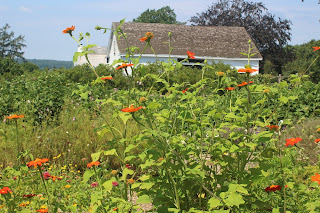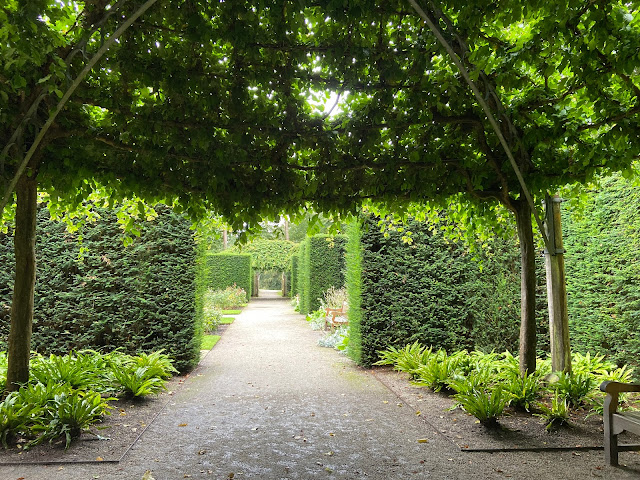GREEN ANIMALS TOPIARY GARDEN
A couple of weeks ago we were in Newport, Rhode Island for a few days. The super rich of the 1900's built their summer homes there. The architectural inspiration for the grandest was drawn from the palaces of Europe, but they were referred to as 'cottages' and only used for a few weeks each year. Some of the most interesting are now looked after by the Preservation Society of Newport County. One of these properties, which is a more modest white clapboard house, has an extensive and interesting garden.
The garden was created by Alice Brayton who inherited the estate from her father. She called it 'green animals' after the existing topiary. A keen horticulturist, she added to the topiary to create a self-sufficient estate with vegetable gardens, orchards and formal flower gardens. Upon her death in 1972 she left the house and garden to the Preservation Society.
Now, I have to confess that I'm not a fan of topiary animals, and given the name of the garden, may well have decided to give it a miss, had we not been passing close by. But that would have been a mistake as there is far more to this garden than whimsical topiary.
The topiary animals are made of California privet and yew. There's an elephant, giraffe and camel in the photograph above. I think perhaps they have just had a jolly good prune, as they look a little skinny.

The Orchard beds are delightfully shady on a hot day. Originally planted with stone fruit trees, they now host crab apple trees with generous underplanting.
Away from the formal areas, on the edge of the vegetable gardens are these quirky little bird houses.
Shady pergolas cover the route through the centre of the garden. One is covered with a grape vine (Vitus vinifera) and one supports a Magnolia x soulangeana. Lush hydrangeas fill the partly shaded beds to either side.
A bed full of cheerful flowers in the cutting garden caught my eye, although I don't know what they are.
Over in the vegetable beds tomatoes are trained up some unusual decorative red supports.
I am as always so grateful to the people who preserve these historic properties and the gardeners who work in them, so we can time travel a little.












Comments
Post a Comment